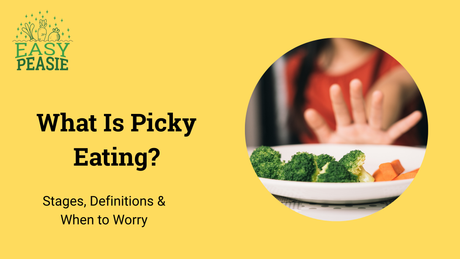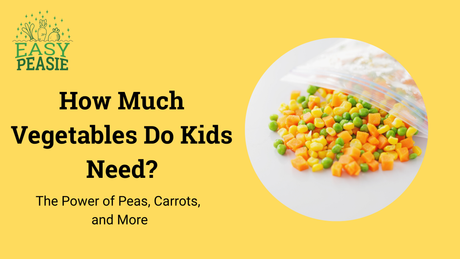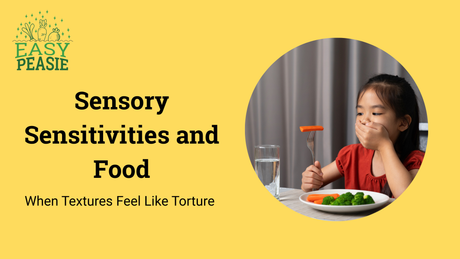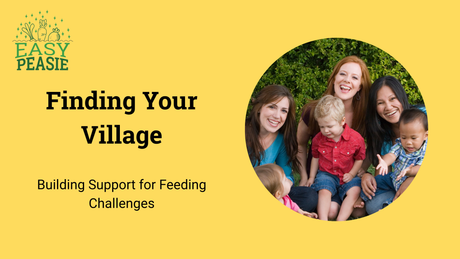Welcome to the whirlwind world of toddlerhood, where every day is an adventure, and yes, tantrums are part of the landscape. Picture this: one minute, your little one is all smiles, and the next, they're a bundle of tears and frustration. Tantrums, those intense bursts of emotion, are a standard feature in the developmental journey of young children.
They're most frequent between the ages of 1 and 3, a period when toddlers are learning to navigate their feelings without the full verbal toolbox to express themselves.
Understanding that tantrums are as normal as losing baby teeth can bring a sigh of relief.
But here's the real scoop: managing them effectively is crucial, not just for your peace but for teaching your little ones about emotions and how to handle them. It's like being the captain of a ship navigating through stormy seas—knowing the strategies to keep the ship steady is key.
Whether it's deciphering the triggers or mastering the calm-down techniques, we're here to guide you through it all. Let's embark on this enlightening journey together, because, with the right tools, navigating the tantrum phase can be a little smoother and a lot more rewarding for everyone involved.
Unraveling the Tantrum Tapestry: A Deep Dive into Toddler Emotional Outbursts
Tantrum 101: The Emotional Gridlock
Picture this: your toddler's brain is a bustling cityscape, where emotions zoom like speedy cars in every direction. Now and then, this metropolitan rush hour becomes too intense, leading to inevitable traffic jams—these are tantrums. During these peak times of emotional congestion, your little one, not yet adept at navigating the complex roadways of self-expression and coping mechanisms, defaults to the most primal form of communication: crying, kicking, screaming, and yes, the occasional toy toss.
Decoding the Tantrum Triggers: The Big Three
So, what throws a wrench in the works? More often than not, it boils down to the big three: frustration, fatigue, and hunger. Frustration is akin to a puzzle that's just a tad too challenging, resulting in a meltdown. Fatigue can be likened to running a marathon without any prior training—overwhelming and exhausting.
And hunger? It's the body's alarm bell for nourishment that, when unanswered, can lead to a full-on emotional eruption. Each of these triggers can dramatically disrupt your little one's emotional equilibrium, turning an ordinary day into a scene of dramatic upheaval.
The Timeline of Tantrums: Understanding the Developmental Stage
The main acts of this emotional drama typically unfold between the ages of 1 and 3. This period is marked by rapid development, where toddlers are exploring the bounds of their independence yet lack the verbal finesse to articulate their desires and emotions. It's as if their minds are brimming with thoughts and needs that they're burning to share, yet they find themselves tongue-tied, unable to communicate effectively.
This developmental discrepancy between the urge for autonomy and the ability to express oneself is the stage upon which most tantrums are set. As children mature and their communication skills sharpen, the frequency and intensity of tantrums generally decrease, much like how traffic thins after rush hour.
Navigating the Emotional Highways
Understanding tantrums is akin to learning to navigate through these developmental rush hours with grace and empathy. Recognizing that tantrums are a natural, albeit challenging, aspect of childhood growth allows us as parents and caregivers to approach these situations with a more informed, patient perspective. It’s crucial to remember that tantrums, while intense and sometimes public, are not indicators of poor parenting or a child's defiance but rather a sign of a child's ongoing growth and need for guidance.
Empowering Our Little Navigators
Our role, then, is to be the traffic controllers: helping our little ones manage the overwhelming rush of emotions, guiding them toward healthier ways of expressing themselves, and teaching them the 'traffic rules' of emotional regulation. This involves acknowledging their feelings, offering comfort, and, as they grow, teaching them to use their words instead of their wails.
The Journey Forward
As we traverse this journey of understanding and managing tantrums, we pave the way for our children to learn invaluable lessons in emotional intelligence. By fostering an environment of empathy, patience, and consistent guidance, we not only mitigate the immediate chaos of tantrums but also equip our children with the tools they need for future emotional resilience.
The Road Less Tantrumed
In essence, the journey through the tumultuous seas of toddlerhood and tantrums is a profound opportunity for growth—for both our children and us as parents. With each tantrum navigated, with each emotional traffic jam cleared, we're not just moving past a moment of distress; we're building the foundation for our children's future emotional well-being, teaching them how to navigate life's ups and downs with confidence and calm.
And as we do, we learn alongside them, growing into more patient, understanding, and resilient parents, ready to guide our little ones through the bustling cityscape of life, one emotional traffic jam at a time.
Deciphering the Storm: Why Tantrums Happen
Emotional Roadwork: Building Emotional Regulation
Think of emotional development as a construction site in your toddler’s brain. Just like a city under development, there are going to be some detours and delays. Tantrums? They're like the road work signs—indicating that your little one is still learning how to manage big emotions.
It’s their way of coping with feelings that are just too big to handle. But fear not, with time and guidance, these emotional highways will become smoother, leading to fewer meltdowns.
Lost in Translation: The Communication Challenge
Imagine wanting a glass of water but only being able to cry or scream to get it. Frustrating, right? That's the daily reality for many toddlers. Their minds are bursting with thoughts and needs, but their language skills are still catching up.
Tantrums often fill this gap, serving as a loud and clear signal that they need something—even if they can't say exactly what. It’s their version of a smoke signal, sending up a flare for help when words fail them.
The World Through Their Eyes: Environmental Triggers
The world can be a big, bustling, overwhelming place for tiny humans. Changes in routine, tension at home, or just the sensory overload of a crowded store can feel like a whirlwind. Toddlers, with their limited understanding and lack of control over their environment, may respond the only way they know how: with a tantrum. It’s less about the specifics of the situation and more about the feeling of being small in a big world that doesn’t make sense.
Understanding the why behind tantrums can shine a light on these stormy moments, making them a little easier to navigate for both parents and toddlers. It’s not just about the here and now, but about the bigger picture of emotional growth, communication, and adapting to the world around them. With a bit of empathy and a lot of patience, we can help our little ones find their way through the tempest, guiding them toward calmer seas.
Mastering the Meltdown: Techniques for Managing Tantrums
Laying the Groundwork: Prevention Strategies
Creating a tantrum-prevention sanctuary at home involves weaving routines, setting crystal-clear expectations, and playing detective to understand tantrum triggers.
Consistency turns your home into a fortress of predictability, offering your toddler the comfort of knowing what's next. By identifying triggers like hunger or tiredness, you preemptively disarm potential tantrums, keeping the peace before storms even form.
Building Tantrum Shields: The Power of Routine
Routines are your secret weapon. They're the spells that ward off chaos, offering a structured day that significantly reduces outbursts. From the morning sun to evening stars, a well-laid plan for meals, play, and sleep can be the magical formula keeping tantrums at bay.
Superpower Insight: Understanding Triggers
Like a seasoned detective, observe and note what sparks your child's tantrums. Is it the transition from play to nap time that's rough? Or perhaps the switch from screen to dinner table? Mapping out these triggers helps you prepare better, switching potential tantrum triggers for smoother transitions.
In the Eye of the Storm: During a Tantrum
Amidst a tantrum, embody calmness. Your role morphs into that of a gentle guide through their emotional turbulence. Validating their feelings can be a soothing balm, often easing the tempest within. Introducing calming techniques such as deep breathing or snuggling with a favorite book can be your beacon of light, leading both of you back to calm.
Navigational Tactics: Calm-Down Techniques
Equip your parenting toolkit with a variety of calm-down strategies. Create a 'calm corner' filled with comfort items, or practice deep breathing exercises together. These techniques aren't just about calming the current storm but also about building resilience for future emotional seas.
Nighttime Negotiations: Toddler Tantrums at Bedtime
Conquer the final frontier of the day with a steadfast bedtime routine. This ritual acts as a soothing signal, heralding the time to wind down. In the face of bedtime resistance, your unflappable calm and comforting reassurances reinforce the night's end.
Sometimes, a simple adjustment in their bedtime environment can quell their unrest, ensuring smoother sailing into dreamland.
Out and About: Handling Tantrums in Public
Public tantrums test your mettle as a parent. Preparation and quick thinking become your allies. Early signs of discontent offer a window to redirect attention and avoid a full-blown meltdown.
In these moments, your focus on your child's needs over the gazes of others becomes your guiding principle, steering you both back to tranquility.
Reflect and Reconnect: After a Tantrum
Post-tantrum conversations are bridges to understanding. They're opportunities to discuss emotions and learn from the experience. Teaching your child to express feelings and exploring alternatives for future situations fortifies them with emotional understanding and deepens your connection.
Empathy and Education: Teaching Emotional Intelligence
This journey is as much about managing tantrums as it is about fostering emotional intelligence in your child. By modeling understanding, discussing feelings, and exploring solutions together, you're laying the foundation for their ability to navigate their emotions independently.
Fostering Resilience: Building Emotional Toolkits
Each tantrum is a teaching moment, a chance to equip your child with tools for emotional resilience. Whether it's through verbal expression, creative outlets, or physical activities, you're helping them build a repertoire of responses for their feelings.
A Path Forward: Continuous Growth and Understanding
Tantrum management is an evolving path, one that adapts as your child grows and changes.
By staying attuned to their needs, maintaining open lines of communication, and consistently applying these strategies, you're not just navigating the choppy waters of tantrums—you're guiding your child toward emotional maturity.
Mastering the Meltdown: A Journey Together
At its heart, managing tantrums is about understanding, patience, and connection. It's a journey you embark on together, transforming challenges into opportunities for growth, learning, and deeper bonds. With each strategy you employ, you're not just steering clear of meltdowns; you're nurturing a resilient, emotionally intelligent child ready to face the world's waves with confidence.
Navigating to Calmer Waters: Embracing the Tantrum Journey
A Beacon of Understanding
Understanding and managing tantrums is not just about navigating the stormy moments but about embracing these challenges as opportunities for growth—both for you and your toddler. It's a journey that requires patience, consistency, and a heart full of love.
Charting a Course Together
Remember, each tantrum is a chance to teach, to bond, and to understand your little one a bit more. With the strategies and insights shared, you're better equipped to turn these tumultuous tides into moments of connection and learning.
Let's approach each tantrum as an opportunity to steer our parenting ships with compassion and wisdom, guiding our children towards emotional resilience and a deeper family bond. Here's to the journey ahead, filled with learning, love, and laughter.
Join Our Community of Navigators
Share Your Journey
We'd love to hear how you've weathered the tantrum storms! Share your experiences, victories, and even the techniques that navigated you through these choppy waters in the comments below.
Got a unique strategy or an effective technique that wasn't mentioned? We're all ears! Your insights could be the guiding light for fellow parents embarking on their tantrum-taming voyage. Let's navigate these adventures together, sharing our collective wisdom for calmer seas ahead.
Leave your comments below; we love to hear from you! And don't forget to follow Easy Peasie for more veggie info and convo on YouTube, Facebook, and Instagram! ~ThePeas













